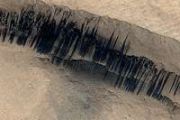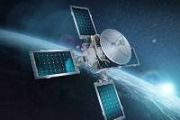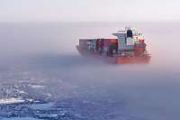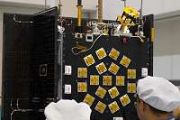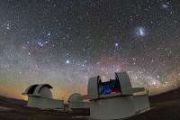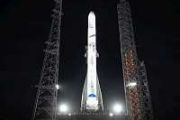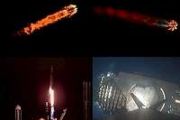
Copernical Team
Check And Double Check: Sols 3821-3822
 Earth planning day - Friday, May 5th, 2023. We continue our triage of the "Ubajara" potential drill site in this plan. In the last plan, we brushed the surface and did some further investigation of Ubajara's chemistry and structure (APXS, ChemCam and MAHLI). Information that came down this morning indicated that the target appears to be representative of what we have been seeing recently, as we
Earth planning day - Friday, May 5th, 2023. We continue our triage of the "Ubajara" potential drill site in this plan. In the last plan, we brushed the surface and did some further investigation of Ubajara's chemistry and structure (APXS, ChemCam and MAHLI). Information that came down this morning indicated that the target appears to be representative of what we have been seeing recently, as we ESA releases image of Earth showing detailed weather patterns
 The European Space Agency and Eumetsat on Thursday released a detailed image of the Earth and its weather patterns from the Meteostat Third Generation Imager-1 satellite.
The image, which was taken on March 18, shows cloud formations over large parts of Europe with details that were previously too small to capture in similar composite images.
"This image is a great example of wha
The European Space Agency and Eumetsat on Thursday released a detailed image of the Earth and its weather patterns from the Meteostat Third Generation Imager-1 satellite.
The image, which was taken on March 18, shows cloud formations over large parts of Europe with details that were previously too small to capture in similar composite images.
"This image is a great example of wha Control, Cooperation, Classification remain focus of DOD's Space Policy
 The assistant secretary of defense for space policy told senators yesterday that his office is "laser focused" on three priorities: space control, space cooperation and space classification.
"On space control, the department will protect and defend our national security interests from the growing scope and scale of space and counterspace threats, and we will protect and defend our service
The assistant secretary of defense for space policy told senators yesterday that his office is "laser focused" on three priorities: space control, space cooperation and space classification.
"On space control, the department will protect and defend our national security interests from the growing scope and scale of space and counterspace threats, and we will protect and defend our service NASA: Up to 4 of Uranus' moons could have water
 NASA scientists concluded that four of Uranus' largest moons likely contain an ocean layer of water between its core and icy crust.
The NASA study announced Thursday is the first to detail the evolution of the interior makeup and structure of all five large moons - Ariel, Umbriel, Titania, Oberon and Miranda.
It suggests four of the moons hold oceans that could be miles deep aft
NASA scientists concluded that four of Uranus' largest moons likely contain an ocean layer of water between its core and icy crust.
The NASA study announced Thursday is the first to detail the evolution of the interior makeup and structure of all five large moons - Ariel, Umbriel, Titania, Oberon and Miranda.
It suggests four of the moons hold oceans that could be miles deep aft The Mystery of the Glass Substance in the Chang'e-5 Lunar Soil
 Glass is typically associated with floor-to-ceiling windows, colorful crafts, and electronic screens. However, it is not only a crucial man-made material but also a naturally occurring substance found in nature. The moon's surface, despite being desolate and barren, contains abundant glassy substances formed by volcanic eruptions, geological movements, and meteorite impacts. Lunar glass can rema
Glass is typically associated with floor-to-ceiling windows, colorful crafts, and electronic screens. However, it is not only a crucial man-made material but also a naturally occurring substance found in nature. The moon's surface, despite being desolate and barren, contains abundant glassy substances formed by volcanic eruptions, geological movements, and meteorite impacts. Lunar glass can rema Study finds female astronauts more efficient, suggesting future space missions with all-female crews
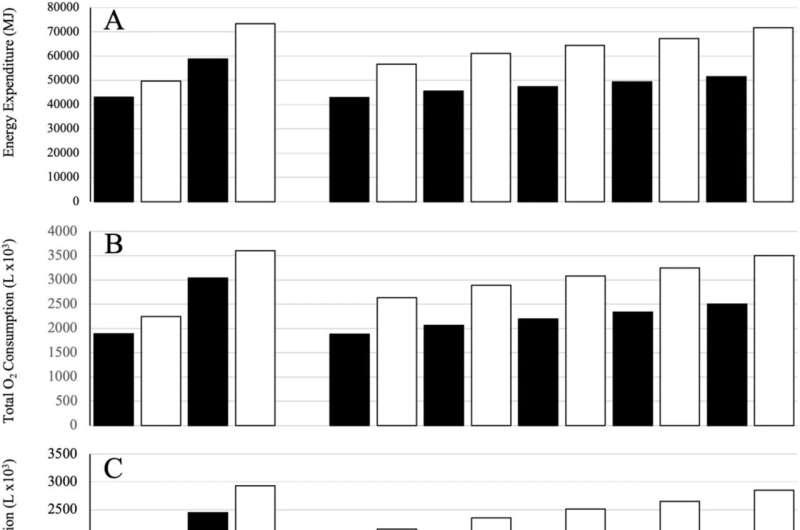
1st lunar eclipse of 2023 dims full moon ever so slightly
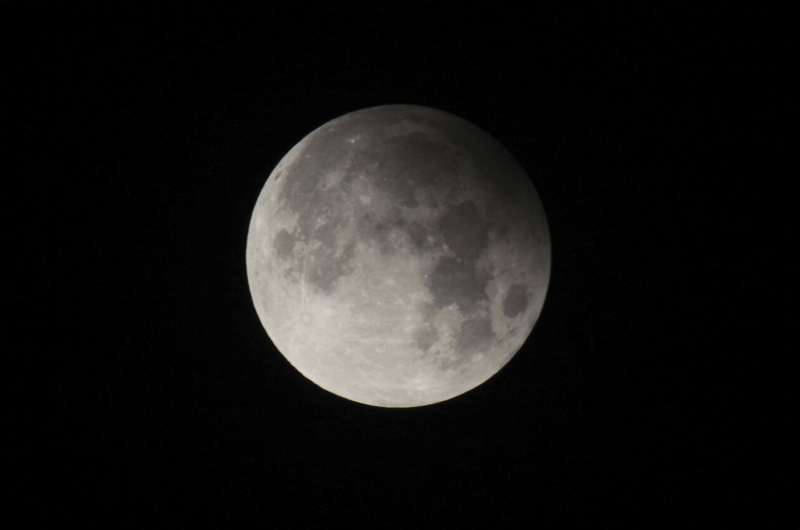
Stargazers in Asia and Australia had the best seats for the year's first lunar eclipse.
Week in images: 01-05 May 2023

Week in images: 01-05 May 2023
Discover our week through the lens
Researchers capture elusive missing step in the final act of photosynthesis
 Photosynthesis plays a crucial role in shaping and sustaining life on Earth, yet many aspects of the process remain a mystery. One such mystery is how Photosystem II, a protein complex in plants, algae and cyanobacteria, harvests energy from sunlight and uses it to split water, producing the oxygen we breathe. Now researchers from the Department of Energy's Lawrence Berkeley National Laboratory
Photosynthesis plays a crucial role in shaping and sustaining life on Earth, yet many aspects of the process remain a mystery. One such mystery is how Photosystem II, a protein complex in plants, algae and cyanobacteria, harvests energy from sunlight and uses it to split water, producing the oxygen we breathe. Now researchers from the Department of Energy's Lawrence Berkeley National Laboratory Raytheon Technologies develops 'NexGen Optix' Tactical Free-Space Optical Comms
 Raytheon Technologies (NYSE: RTX), announced the launch of NexGen Optix, a tactical Free-Space Optical Communications system that enables high-speed, secure data transfer in challenging environments.
NexGen Optix, developed by Raytheon Blackbird Technologies, provides greater bandwidths in a form factor that is smaller, weighs less, uses less power and costs less than conventional optical
Raytheon Technologies (NYSE: RTX), announced the launch of NexGen Optix, a tactical Free-Space Optical Communications system that enables high-speed, secure data transfer in challenging environments.
NexGen Optix, developed by Raytheon Blackbird Technologies, provides greater bandwidths in a form factor that is smaller, weighs less, uses less power and costs less than conventional optical 













